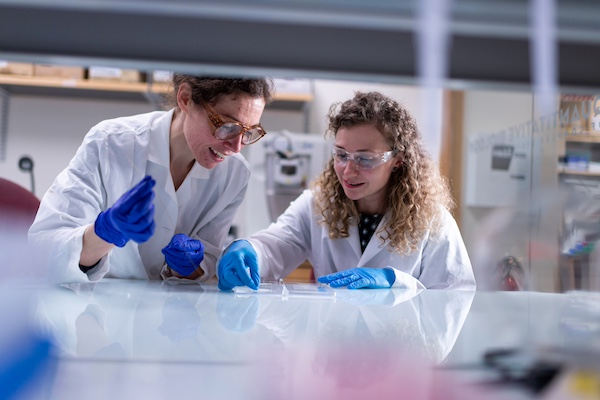From July 17-21, around 50 middle schoolers from the Madison Metropolitan School District participated in the WI STEM Explorations Camp on the UW–Madison campus.
The 7th grade students were nominated by their science teachers to attend the week-long day camp offered through the Madison School & Community Recreation (MSCR) program.
This unique camp, organized by the Morgridge Community Engagement Team, allowed them to experience a variety of hands-on activities in different labs at different sites across the UW campus. Through speaking with a diverse group of scientists and researchers, they learned that science is more than just lab coats and pipettes — though they had plenty of opportunity to do that, too — and there are many avenues to a STEM career.
From stem cells to dairy cows, the students gained exposure to the many flavors of science and developed a bit of their own science identity along the way. Check out some of the students in action in the photos below.
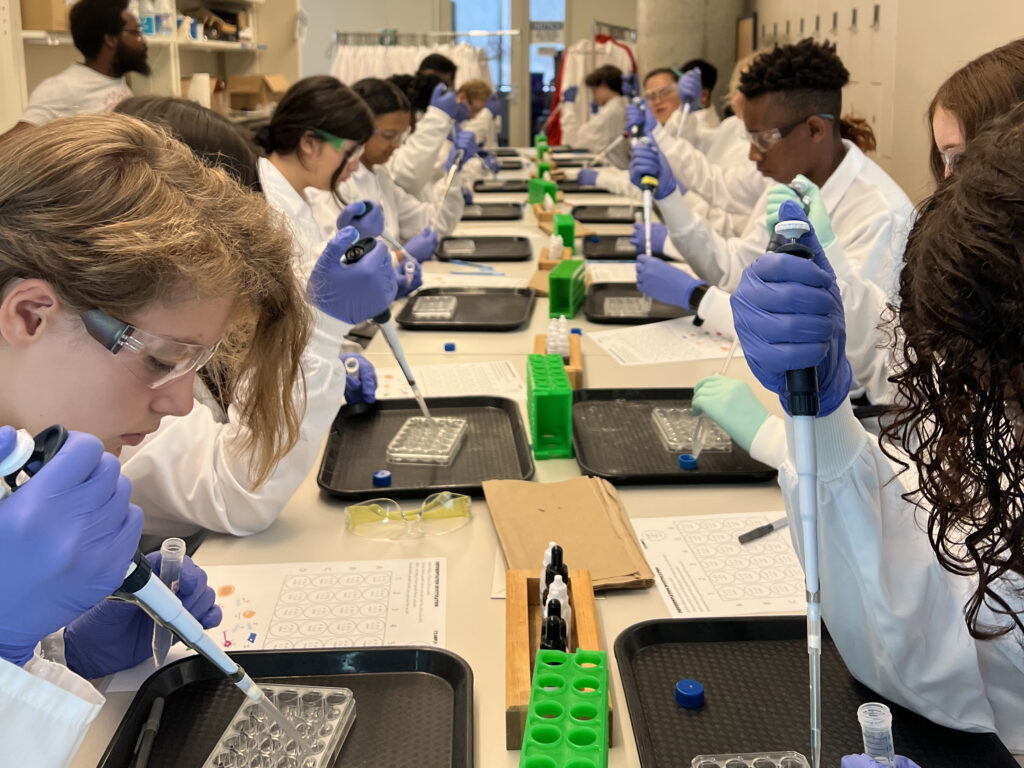 Students practice their pipetting skills with a stem cell activity at the Discovery Building.
Students practice their pipetting skills with a stem cell activity at the Discovery Building. 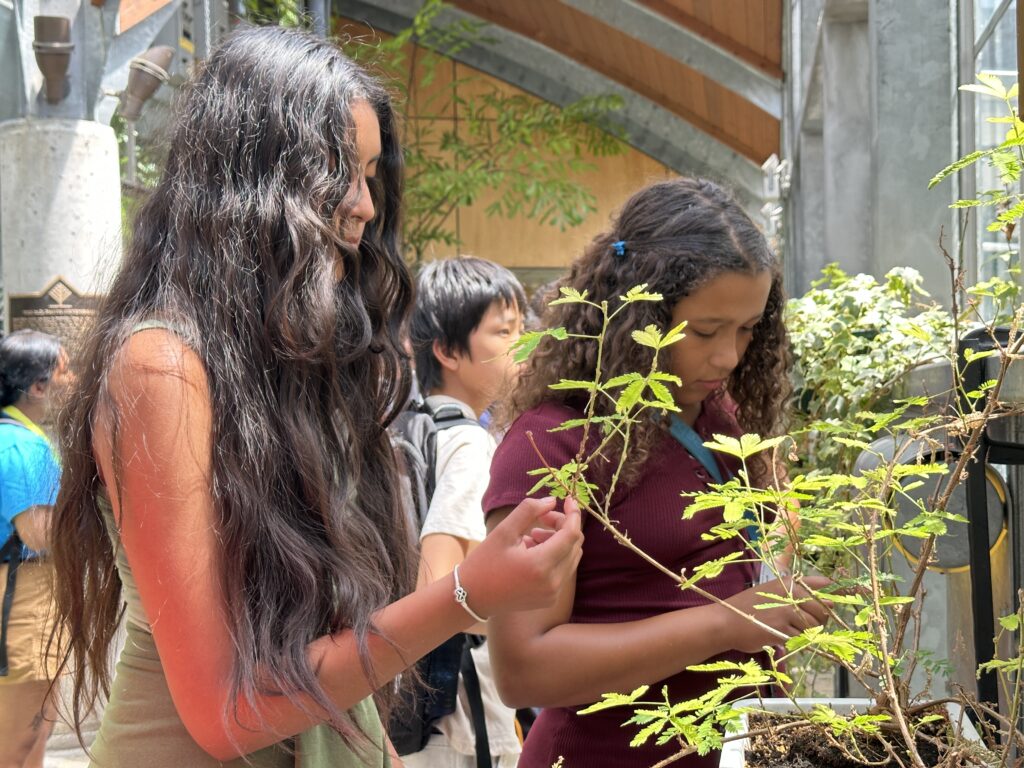 Two students get up close with Mimosa podica, the "touch-me-not" sensitive plant, at the D.C. Smith Greenhouse.
Two students get up close with Mimosa podica, the "touch-me-not" sensitive plant, at the D.C. Smith Greenhouse. 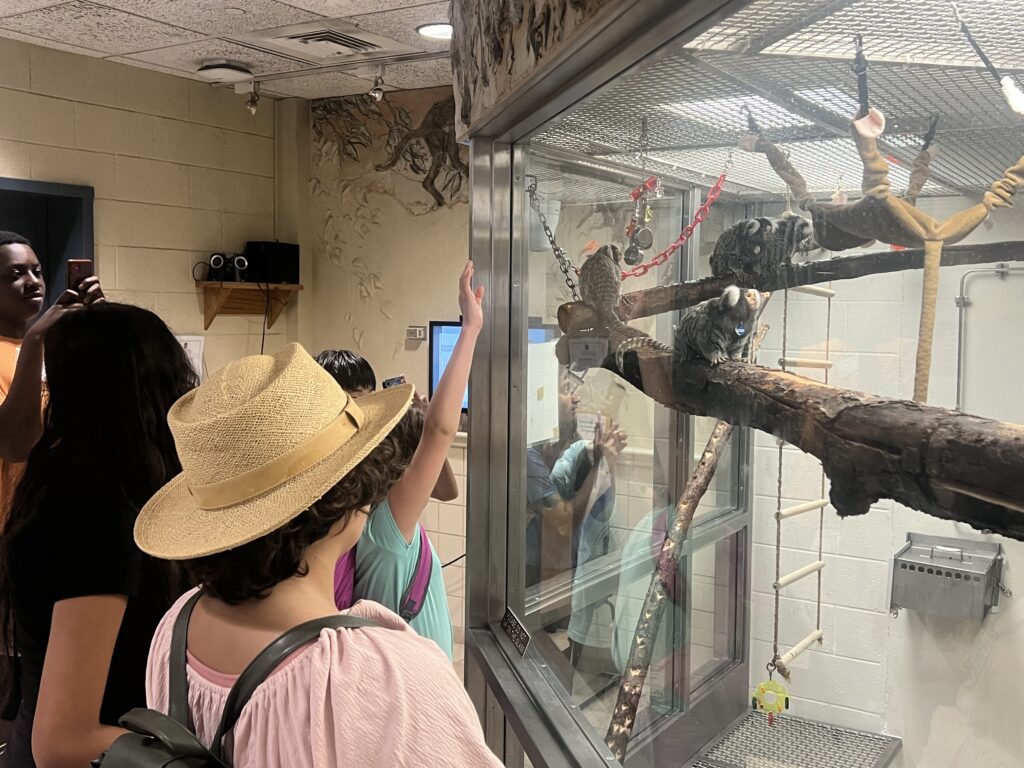 At the Wisconsin National Primate Research Center, responsible and ethical animal research is necessary for basic biology research and modeling human disease.
At the Wisconsin National Primate Research Center, responsible and ethical animal research is necessary for basic biology research and modeling human disease. 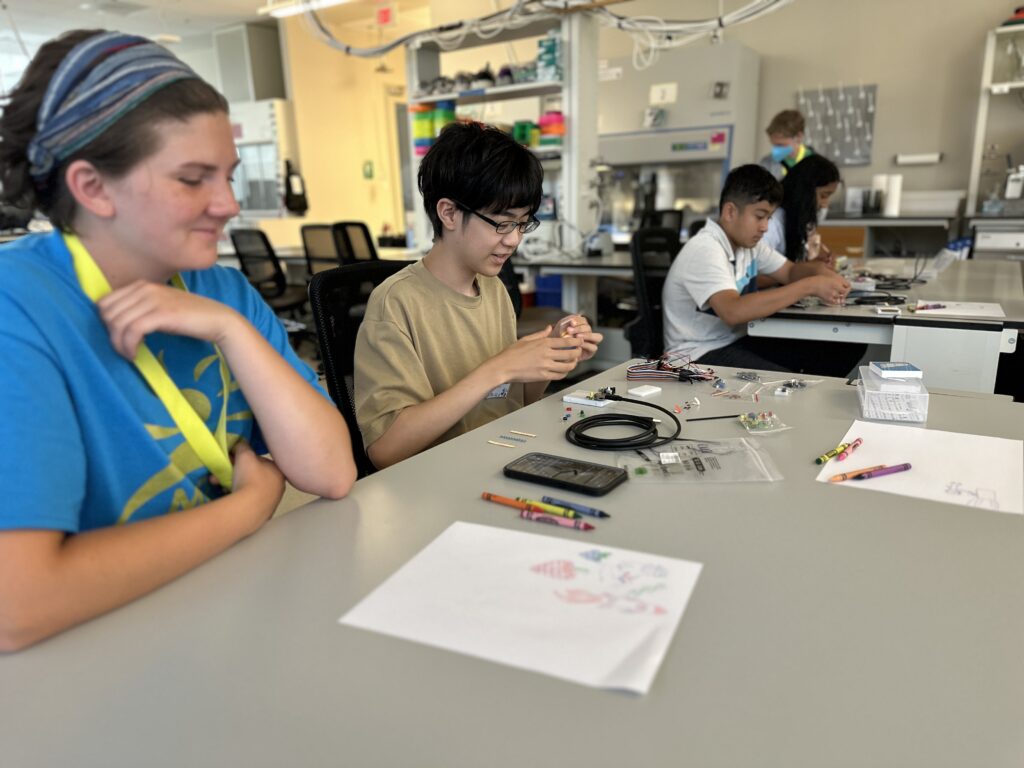 Students engineer their own circuits with Madym, a local organization dedicated to provide girls and youth of color with the skills, experiences, and connections to pursue careers in and change the face of STEM.
Students engineer their own circuits with Madym, a local organization dedicated to provide girls and youth of color with the skills, experiences, and connections to pursue careers in and change the face of STEM. 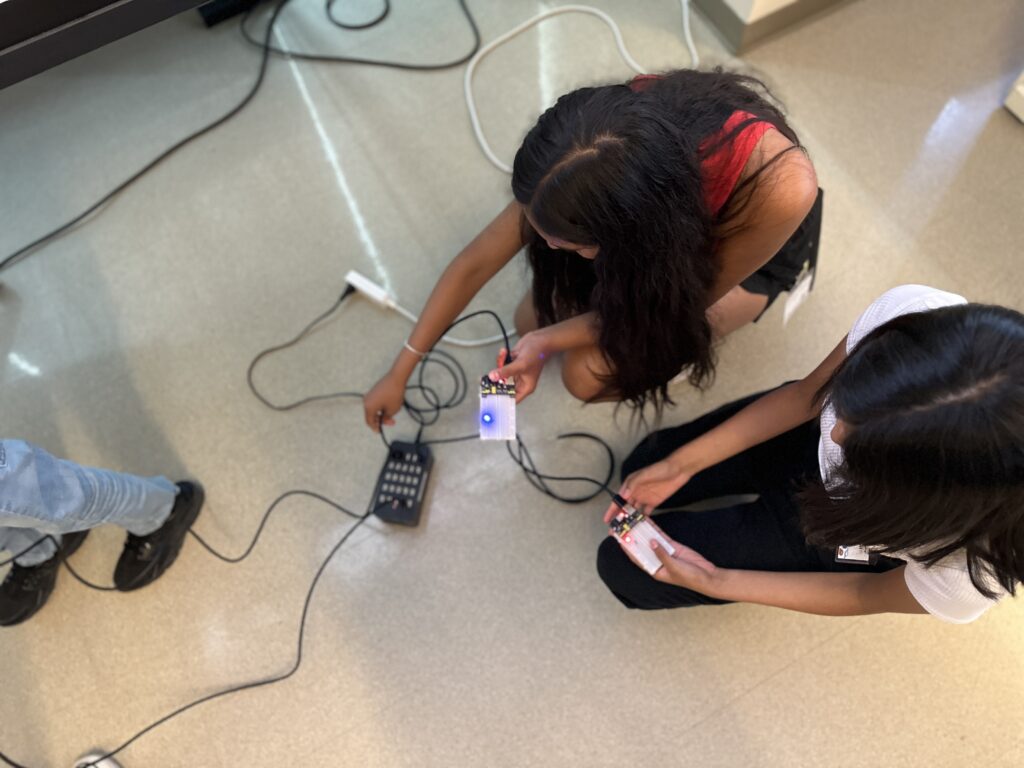 All circuits are a go! 💡
All circuits are a go! 💡 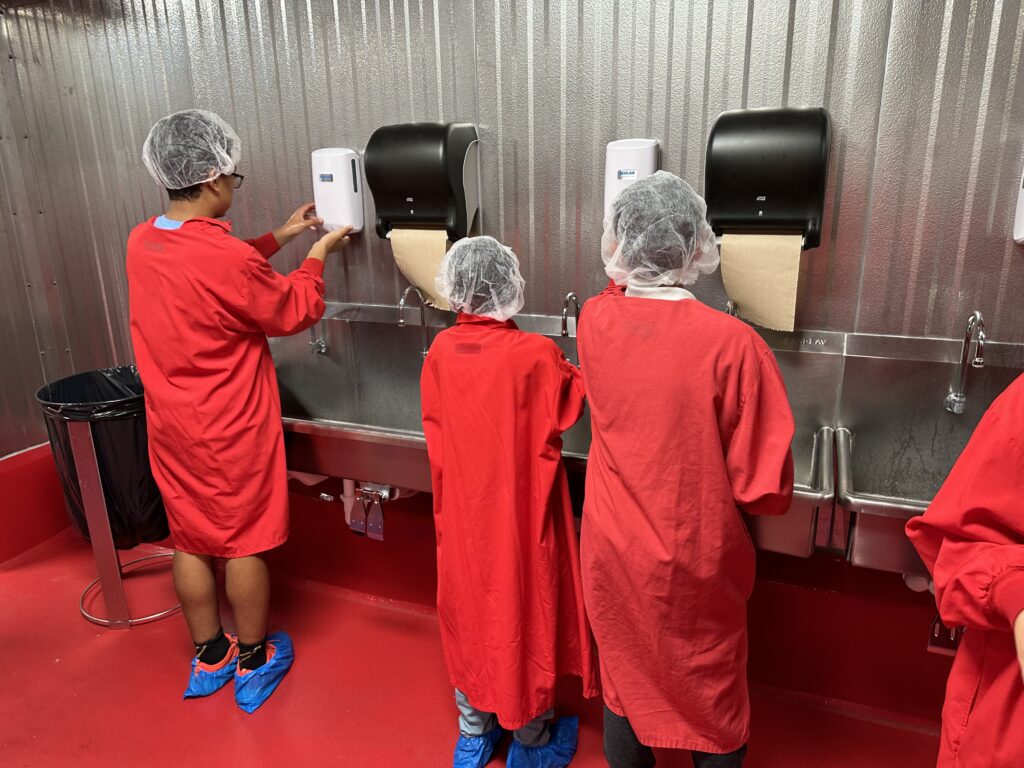 When working at the Meat Science & Animal Biologics Discovery Building at UW–Madison, it's important to reduce contamination.
When working at the Meat Science & Animal Biologics Discovery Building at UW–Madison, it's important to reduce contamination. 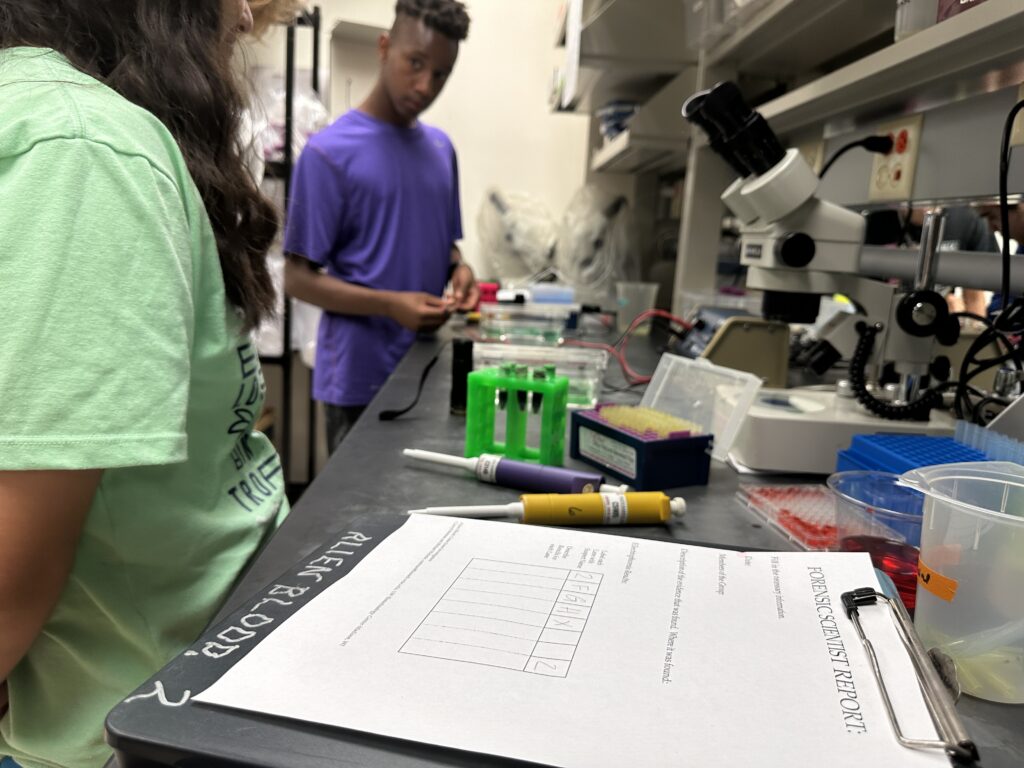 Students act as forensic scientists and analyze samples of "alien blood".
Students act as forensic scientists and analyze samples of "alien blood". 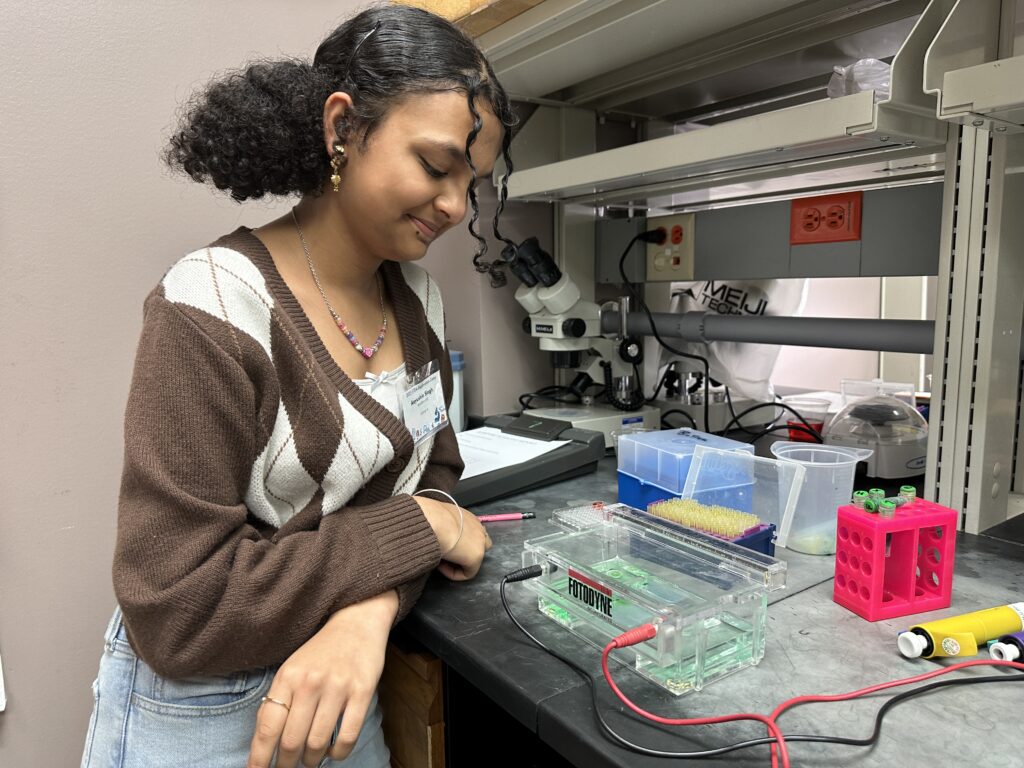 Gel electrophoresis is a method used in molecular biology to estimate the size of DNA or RNA fragments that are separated by an electrical charge.
Gel electrophoresis is a method used in molecular biology to estimate the size of DNA or RNA fragments that are separated by an electrical charge. 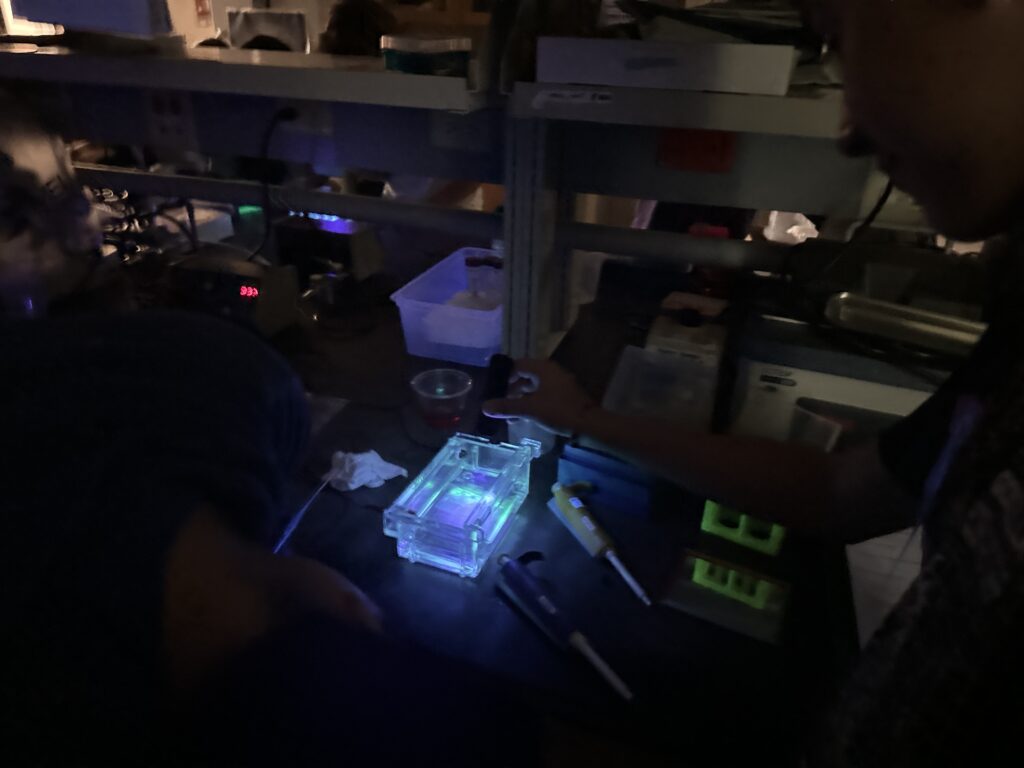 The DNA of the "alien blood" samples is visible using a fluorescent tag that glows.
The DNA of the "alien blood" samples is visible using a fluorescent tag that glows. 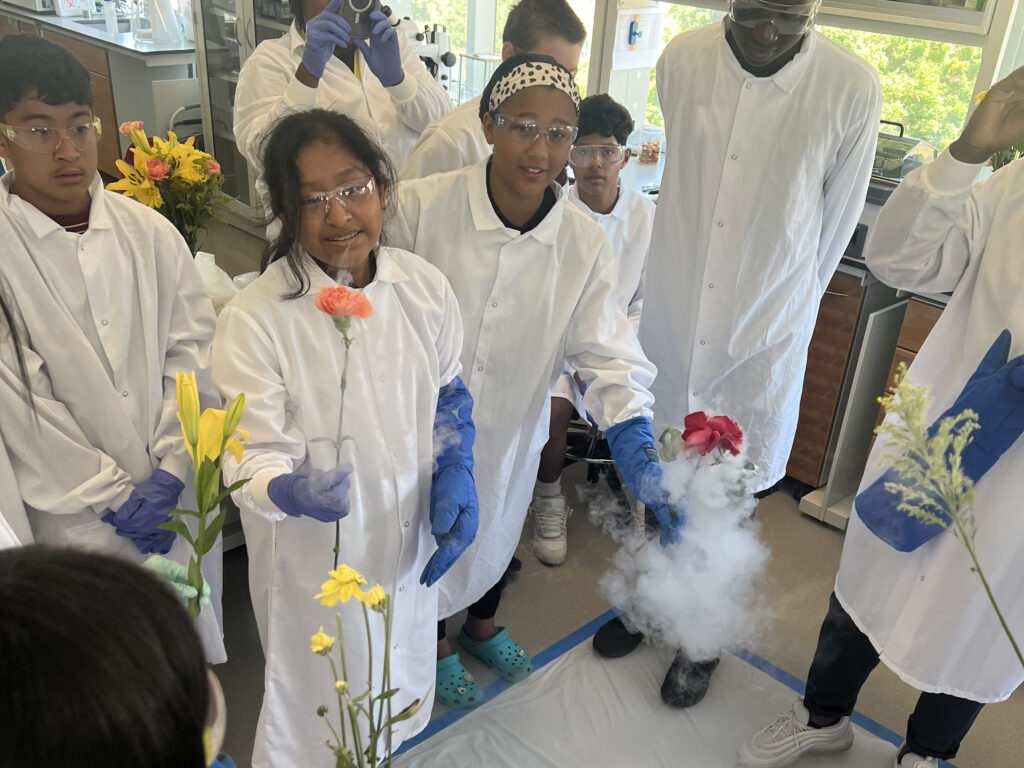 What happens when you cryogenically freeze a flower? Students experiment with and observe the properties of liquid nitrogen.
What happens when you cryogenically freeze a flower? Students experiment with and observe the properties of liquid nitrogen. 
